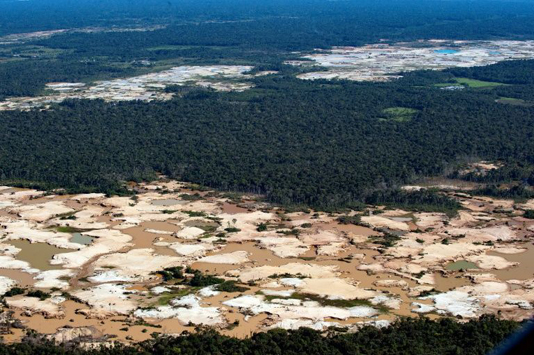PARIS, March 11, 2020 (BSS/AFP) – The Amazon rainforest is nearing a
threshold which, once crossed, would see one of the world’s largest and
richest ecosystems morph into arid savannah within half-a-century, scientists
said Tuesday.
Another major ecosystem, Caribbean coral reefs, could die off in only 15
years were it to pass its own point-of-no-return, the scientists reported in
the journal Nature Communications.
Each of these so-called “regime changes” would have dire consequences for
humanity and other species with which we share habitat, they warned.
In both cases the projected tipping point for irreversible change results
from global warming and environmental damage — deforestation in the case of
the Amazon, and pollution and acidification for corals.
The UN’s climate science advisory panel, the IPCC, has said that 1.5
degrees Celsius of atmospheric warming above preindustrial levels would doom
90 percent of the world’s shallow-water corals. A 2C rise would spell their
near-complete demise.
Earth’s surface has already heated up more than 1C.
The temperature tipping point for the Amazon is less clear, but scientists
estimate that clearing 35 percent of its surface would trigger its eventual
demise.
About 20 percent of the Amazon basin rainforest — straddling seven
nations and covering more than five million square kilometres (two million
square miles) — has been wiped out since 1970, mostly for the production of
lumber, soy, palm oil, biofuels and beef.
“Humanity needs to prepare for changes far sooner than expected,” said
lead author Simon Willcock, a professor at Bangor University’s School of
Natural Science.
Recent out-of-control fires in the Amazon and Australia — both made more
likely and more intense by climate change — suggest that many ecosystems are
“teetering on the edge of this precipice,” he added.
– From ‘sink’ to ‘source’ –
Scientists not involved in the research endorsed its methodology and
sounded an alarm at its conclusions.
“The implications of the study for the Amazon are terrifying,” said
Alexandre Antonelli, director of science at the Royal Botanical Gardens in
Kew, London.
“Unless urgent action is taken now, we may be on the brink of losing the
world’s largest and most biodiverse rainforest, which has evolved for at
least 58 million years and sustains the lives of tens of millions of people.”
The Amazon ecosystem could pass a point-of-no-return as soon as next year,
Willcock and colleagues reported.
Another study, published last week, showed that the world’s tropical
forests are rapidly loosing their capacity to absorb planet-warming carbon
dioxide emitted by burning fossil fuels, with the Amazon in the process of
flipping from a CO2 “sink” to “source”.
Global forests — and especially the tropics — soak up 25 to 30 percent
of the CO2 humanity spews into the atmosphere. Oceans take up another 20 to
25 percent.
The Amazon’s dense tropical canopy — the largest in the world — also
stores a huge amount of carbon, roughly equivalent to 10 times the amount
discharged into the atmosphere every year.
“The new findings are a further reminder that this ecosystem … is at
risk over a timescale of no more than a few decades,” Georgina Mace, a
professor or biodiversity and ecosystems at University College London,
commented.
It has long been known that ecosystems can shift, sometimes quickly, under
stress.
The researchers analysed such transformations in more than 40 natural
environments on land and in water, ranging in size from small ponds to the
Black Sea.
One of these — the Sahel in Africa — changed from forested landscape to
desert, though over a longer timescale.
“Big systems collapse much faster than you might expect,” said co-author
John Dearing, a professor at Southampton University in England.
The modular structure of large ecosystems initially provides resilience
against changes such as global warming or forest destruction, he explained.
But once a certain threshold is crossed, the same modularity causes the
rate at which the system unravels to accelerate.



